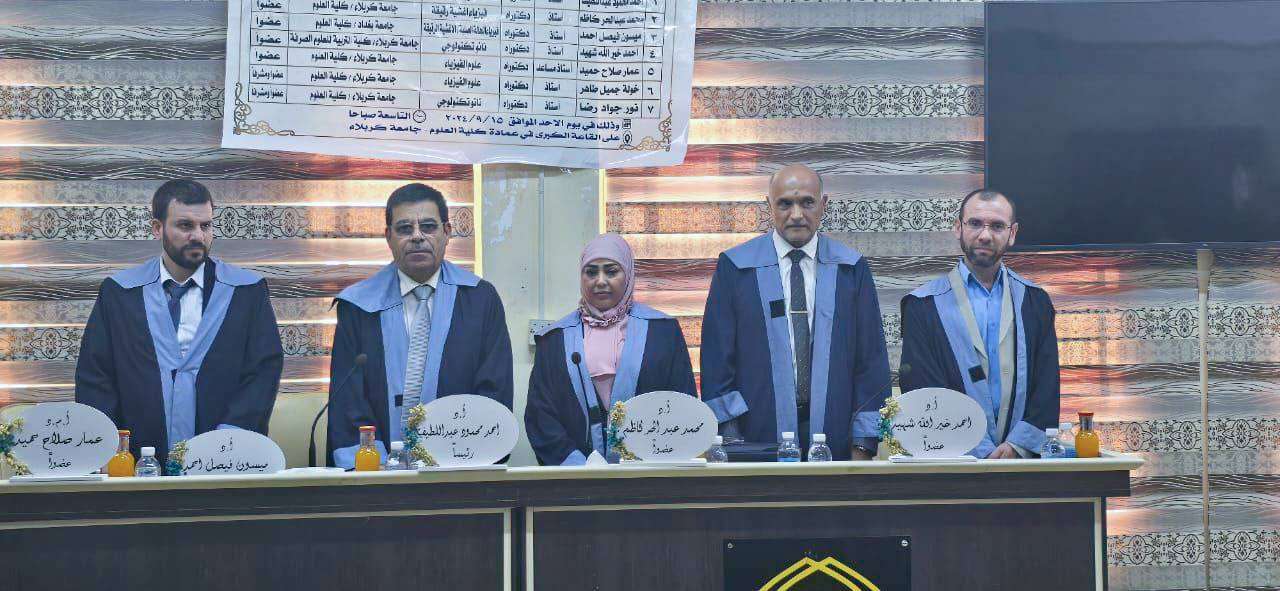A PhD dissertation at the College of Science, University of Karbala, discussed the preparation of (SnO2/CuO – rGO) nanostructures and the characterization of their gas sensing performance. The study, presented by student Inaam Abdul Hamoud from the Department of Physics, aimed at synthesizing nanocomposites (reduced graphene oxide, copper oxide, copper oxide – reduced graphene oxide, and copper oxide – reduced graphene oxide/tin oxide) using both hydrothermal and pulsed laser deposition methods, as well as investigating their structural and surface properties and their behavior as gas sensors.
The study involved the preparation of several nanocomposites, including copper oxide, reduced graphene oxide, and bilayer copper oxide – reduced graphene oxide, in addition to a trilayer composite of copper oxide – reduced graphene oxide/tin oxide. The structural and morphological properties of these nanocomposites were analyzed, and their gas sensing behavior was studied. The results indicated that the addition of reduced graphene oxide to copper oxide and tin oxide enhanced the sensor’s response to the reducing gases ammonia and hydrogen sulfide.
Conclusions of the Study:
1. The study demonstrated that graphene oxide was completely reduced at 200°C.
2. The hydrothermal method was found to be an effective technique for the synthesis of copper oxide at low temperatures (100°C).
3. The study confirmed that the addition of reduced graphene oxide to the nanocomposites significantly enhanced the sensor’s sensitivity, especially for hydrogen sulfide gas.






























































